Opinion & Analysis
Taking the eyes out of putting

Before we take the eyes out of putting, let’s take a quick eye test. Look at this picture below and answer this question: Which looks longer, A or B?
The correct answer is C!
I know you just read the question again and are screaming, “There is no C!”
That’s because like any great illusion, it’s a trick. The cards you see are EXACTLY the same. Our eyes are just lousy at seeing curves.
Which brings us to green reading in the modern game. Think about golf course architecture — specifically green construction. Courses are now built with modern capabilities, no bare hands and mules dragging soil. So what are some things that happen that upset our eyes’ ability to read greens?
No. 1 is that the architect can tilt the green away from natural drainage patterns. The old saying “it breaks toward the water” actually can be 100 percent wrong because the architect can move the dirt to make it go the other way.
When the PGA Tour was at Torrey Pines recently for the Farmers Insurance Open, I heard the announcers say too many times to count that the players need to take into account the ocean when reading the break for a putt. Lunacy! When the South Course was redone before the 2008 U.S. Open, modern equipment was brought in to move the ground around, and man determined the slopes on the greens — NOT NATURE. It would be very easy for me to build a green that broke completely away from the water, agreed?
Secondly, man-made drainage patterns allow for run off in a minimum of three directions for most greens. So you can have lots of opposite movement on greens that mess with your eyes, also going away from the natural lay of the land. So in Phoenix, putts are not necessarily biased to break toward “The Valley,” and in Palm Springs, they all don’t break toward Indio!
That is why eyesight can be so misleading. There has to be a better way to read greens that does not fool you and make you guess as to what you are seeing?
That brings me to last May when I was hanging around the putting green at The Memorial Tournament. Adam Scott had just won the previous week and made lots of putts including two in a playoff. Before each putt, he held up several fingers and then lined up and hit the putt. It was the first time I had seen Aimpoint Express. I had read about it, but now it was live fire with the No. 1 player in the world at that time. Now here I was watching it up close at The Memorial. I soaked it all in as Hunter Mahan worked the green with his caddy. Then Adam arrived and worked it.
I noticed two things immediately:
- They made lots of putts…and they made the reads quickly in doing so.
- When they missed, they were burning the edge every time.
In fact, you might already be doing Aimpoint Express and not even know it! Have you ever gotten over a putt and felt like it might break more/less than you saw? That is because your feet are feeling the incline and sending your body an adjustment to calibrate to so you stand in balance. That is exactly what Express does.
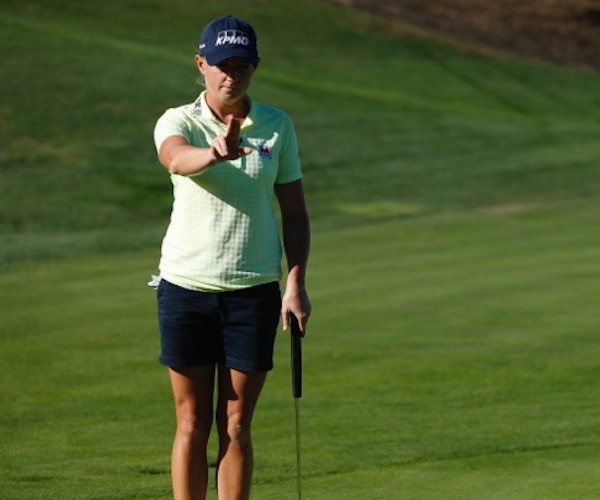
This gets me to the point of needing to bring clarity to Aimpoint Express for players confused by what they are seeing and hearing on TV. Just last week, Jerry Foltz and Judy Rankin on The Golf Channel LPGA Tour telecast from Ocala had an Aimpoint Express discussion that was full of errors that left the viewer confused and badly misinformed.
So let me give you some facts about green reading with Aimpoint Express. We are going to hit these 3 points:
- Aimpoint Express is quick.
- Aimpoint Express is NOT technical.
- The best players are using it.
Take the last point first because all you have to do is read the list of names that use Aimpoint Express: Adam Scott, Anna Nordqvist, Stacey Lewis, Ian Poulter, Zach Johnson, Hunter Mahan and Lydia Ko, the new No. 1-ranked female golfer in the world.
Also, Aimpoint Express is not technical. When you can learn it in less than an hour and immediately make putts from all over the green, that is in no way technical. Quantum Physics or String Theory is technical. Taking apart my computer and putting it back together (and having it work again) is technical!
Here is how non-technical it is.
I had a tour player recently ask me what we do about grain and if I can adjust to play more or less break if I want to with Aimpoint Express? He had been told there is no adjustment for it because it is too technical. Well, that is another false statement and goes to how not technical it is. Aimpoint Express is accurate to 95 percent of the read, while the other 5 percent of the putt is your experience and athleticism, adjusting for things like grain and how hard to strike the ball. It’s literally as easy as that!
The last comment I hear a lot is that Aimpoint takes too long. On the contrary, it’s so fast that if every player on the Ryder Cup teams last year knew how to do it, they could play the event in two days instead of three. I can get the read and have the putt on the way a lot faster with Aimpoint Express than when I read it with my eyes after walking all over the place. My eyes are nowhere near accurate enough for me to get the read quickly!
I prefer to be 95 percent accurate as opposed to just going with my best guess and reading putts with my eyes. Remember the test above, with the curved cards, if you want to trust your eyes.
Our feet are like a pair of highly sensitive levels. They are always seeking dynamic balance to keep us safe by making minute adjustments and sending that message to our brain. So they are very effective at feeling slope because they have been doing that since we started to walk in order to keep us upright and out of harm’s way.
So after learning Aimpoint Express and teaching it to my players and watching them win tournaments, I can clearly see the future of green reading. If you do not want more precision, then keep guessing with your eyes. If you want to get your read faster and make more putts, then find a certified instructor near you and check out Aimpoint Express.
- LIKE240
- LEGIT54
- WOW17
- LOL6
- IDHT5
- FLOP14
- OB5
- SHANK68
Opinion & Analysis
The Wedge Guy: What really makes a wedge work? Part 1
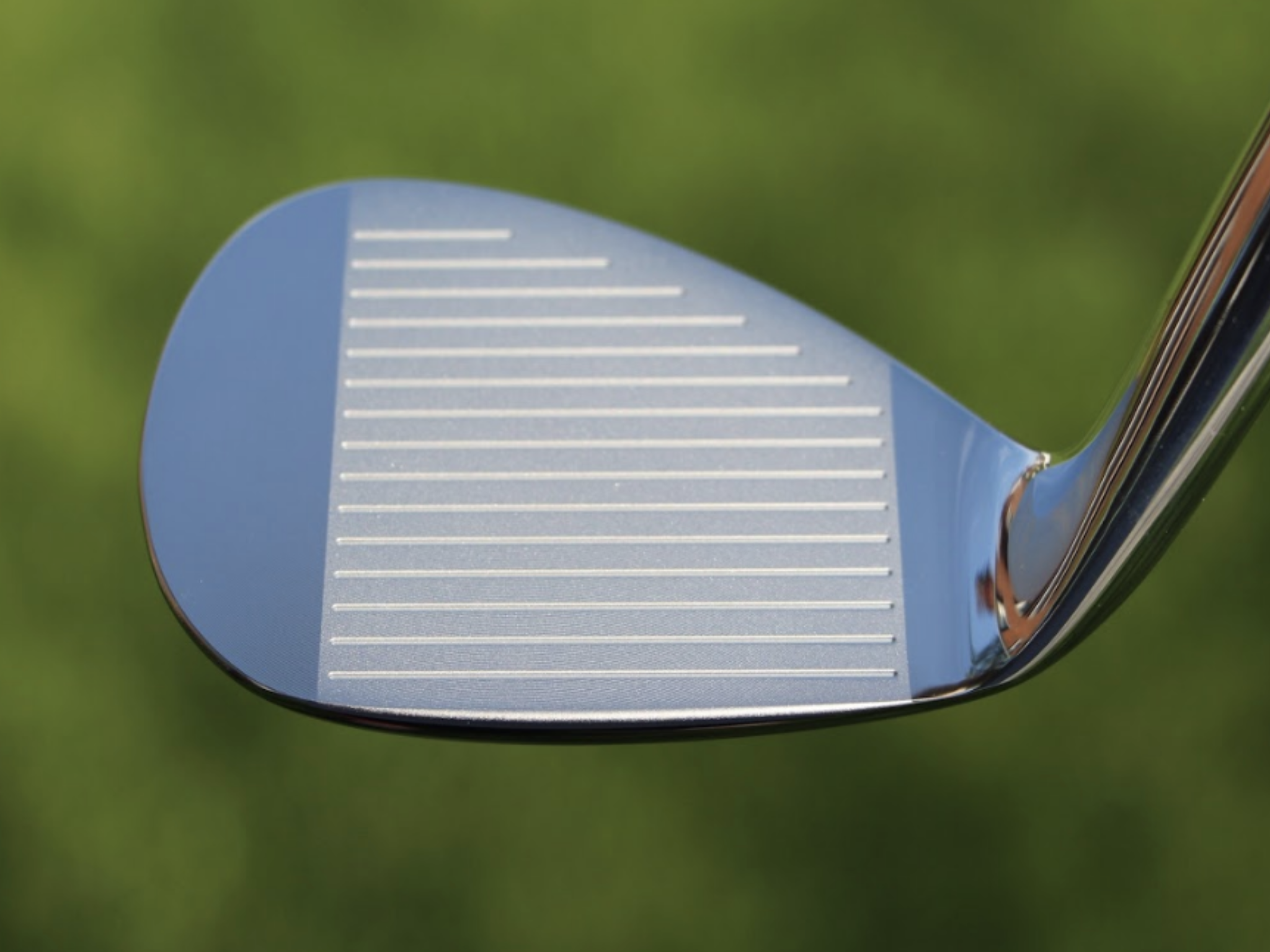
Of all the clubs in our bags, wedges are almost always the simplest in construction and, therefore, the easiest to analyze what might make one work differently from another if you know what to look for.
Wedges are a lot less mysterious than drivers, of course, as the major brands are working with a lot of “pixie dust” inside these modern marvels. That’s carrying over more to irons now, with so many new models featuring internal multi-material technologies, and almost all of them having a “badge” or insert in the back to allow more complex graphics while hiding the actual distribution of mass.
But when it comes to wedges, most on the market today are still single pieces of molded steel, either cast or forged into that shape. So, if you look closely at where the mass is distributed, it’s pretty clear how that wedge is going to perform.
To start, because of their wider soles, the majority of the mass of almost any wedge is along the bottom third of the clubhead. So, the best wedge shots are always those hit between the 2nd and 5th grooves so that more mass is directly behind that impact. Elite tour professionals practice incessantly to learn to do that consistently, wearing out a spot about the size of a penny right there. If impact moves higher than that, the face is dramatically thinner, so smash factor is compromised significantly, which reduces the overall distance the ball will fly.
Every one of us, tour players included, knows that maddening shot that we feel a bit high on the face and it doesn’t go anywhere, it’s not your fault.
If your wedges show a wear pattern the size of a silver dollar, and centered above the 3rd or 4th groove, you are not getting anywhere near the same performance from shot to shot. Robot testing proves impact even two to three grooves higher in the face can cause distance loss of up to 35 to 55 feet with modern ‘tour design’ wedges.
In addition, as impact moves above the center of mass, the golf club principle of gear effect causes the ball to fly higher with less spin. Think of modern drivers for a minute. The “holy grail” of driving is high launch and low spin, and the driver engineers are pulling out all stops to get the mass as low in the clubhead as possible to optimize this combination.
Where is all the mass in your wedges? Low. So, disregarding the higher lofts, wedges “want” to launch the ball high with low spin – exactly the opposite of what good wedge play requires penetrating ball flight with high spin.
While almost all major brand wedges have begun putting a tiny bit more thickness in the top portion of the clubhead, conventional and modern ‘tour design’ wedges perform pretty much like they always have. Elite players learn to hit those crisp, spinny penetrating wedge shots by spending lots of practice time learning to consistently make contact low in the face.
So, what about grooves and face texture?
Grooves on any club can only do so much, and no one has any material advantage here. The USGA tightly defines what we manufacturers can do with grooves and face texture, and modern manufacturing techniques allow all of us to push those limits ever closer. And we all do. End of story.
Then there’s the topic of bounce and grinds, the most complex and confusing part of the wedge formula. Many top brands offer a complex array of sole configurations, all of them admittedly specialized to a particular kind of lie or turf conditions, and/or a particular divot pattern.
But if you don’t play the same turf all the time, and make the same size divot on every swing, how would you ever figure this out?
The only way is to take any wedge you are considering and play it a few rounds, hitting all the shots you face and observing the results. There’s simply no other way.
So, hopefully this will inspire a lively conversation in our comments section, and I’ll chime in to answer any questions you might have.
And next week, I’ll dive into the rest of the wedge formula. Yes, shafts, grips and specifications are essential, too.
- LIKE27
- LEGIT7
- WOW1
- LOL1
- IDHT2
- FLOP3
- OB1
- SHANK2
Golf's Perfect Imperfections
Golf’s Perfect Imperfections: Amazing Session with Performance Coach Savannah Meyer-Clement
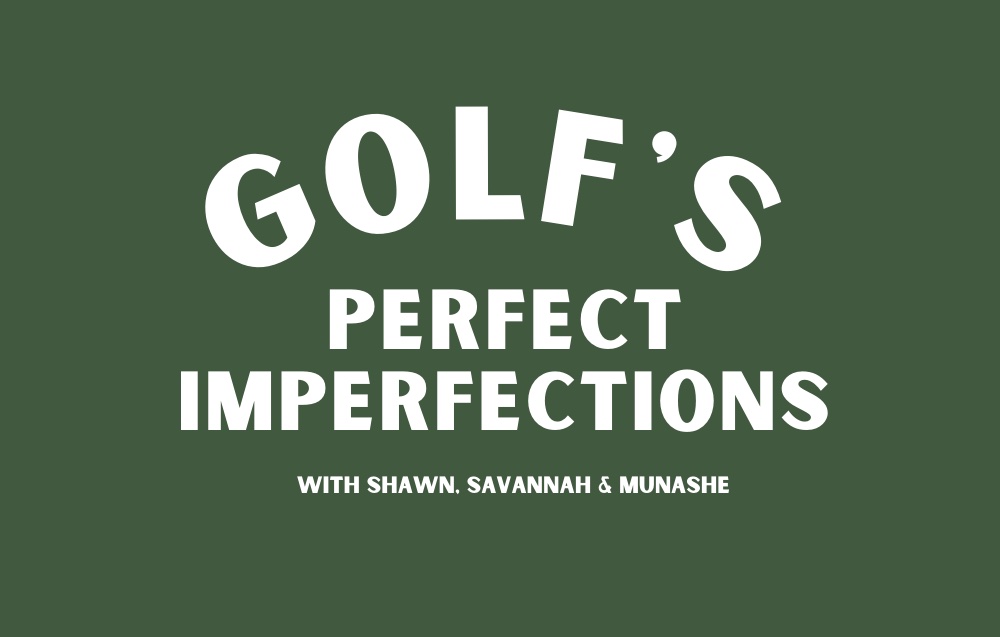
In this week’s episode, we spent some time with performance coach Savannah Meyer-Clement who provides many useful insights that you’ll be able to implement on the golf course.
- LIKE0
- LEGIT0
- WOW0
- LOL0
- IDHT0
- FLOP0
- OB0
- SHANK1
19th Hole
Vincenzi’s 2024 RBC Heritage betting preview: Patrick Cantlay ready to get back inside winner’s circle
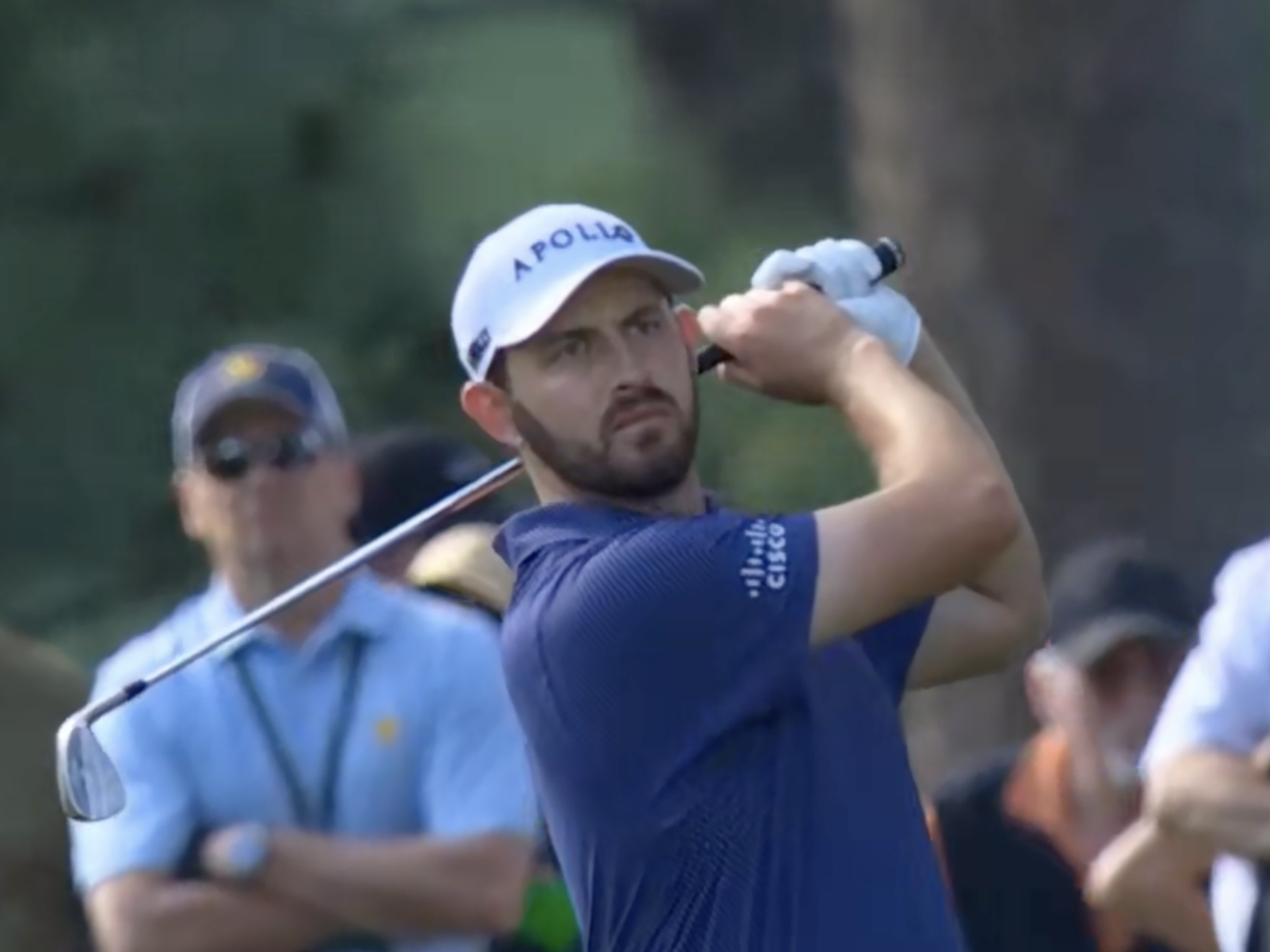
Just a two-hour drive from Augusta National, the PGA TOUR heads to Harbour Town Golf Links in Hilton Head Island, S.C. Hilton Head Island is a golfer’s paradise and Harbour Town is one of the most beautiful and scenic courses on the PGA TOUR.
Harbour Town Golf Links is a par-71 that measures 7,121 yards and features Bermuda grass greens. A Pete Dye design, the course is heavily tree lined and features small greens and many dog legs, protecting it from “bomb-and-gauge” type golfers.
The field is loaded this week with 69 golfers with no cut. Last year was quite possibly the best field in RBC Heritage history and the event this week is yet another designated event, meaning there is a $20 million prize pool.
Most of the big names on the PGA Tour will be in attendance this week with the exceptions of Hideki Matsuyama and Viktor Hovland. Additionally, Webb Simpson, Shane Lowry, Gary Woodland and Kevin Kisner have been granted sponsors exemptions.
Past Winners at Harbour Town
- 2023: Matt Fitzpatrick (-17)
- 2022: Jordan Spieth (-13)
- 2021: Stewart Cink (-19)
- 2020: Webb Simpson (-22)
- 2019: CT Pan (-12)
- 2018: Sotoshi Kodaira (-12)
- 2017: Wesley Bryan (-13)
- 2016: Branden Grace (-9)
- 2015: Jim Furyk (-18)
In this article and going forward, I’ll be using the Rabbit Hole by Betsperts Golf data engine to develop my custom model. If you want to build your own model or check out all of the detailed stats, you can sign up using promo code: MATTVIN for 25% off any subscription package (yearly is best value).
Key Stats For Harbour Town
Let’s take a look at key metrics for Harbour Town Golf Links to determine which golfers boast top marks in each category over their past 24 rounds.
Strokes Gained: Approach
Strokes Gained: Approach is exceedingly important this week. The greens at Harbour Town are about half the size of PGA TOUR average and feature the second-smallest greens on the tour. Typical of a Pete Dye design, golfers will pay the price for missed greens.
Total SG: Approach Over Past 24 Rounds
- Scottie Scheffler (+1.27)
- Tom Hoge (+1.27)
- Corey Conners (+1.16)
- Austin Eckroat (+0.95)
- Cameron Young (+0.93)
Good Drive %
The fairways at Harbour Town are tree lined and feature many dog legs. Bombers tend to struggle at the course because it forces layups and doesn’t allow long drivers to overpower it. Accuracy is far more important than power.
Good Drive % Over Past 24 Rounds
- Brice Garnett (88.8%)
- Shane Lowry (+87.2%)
- Akshay Bhatia (+86.0%)
- Si Woo Kim (+85.8%)
- Sepp Straka (+85.1%)
Strokes Gained: Total at Pete Dye Designs
Pete Dye specialists tend to play very well at Harbour Town. Si Woo Kim, Matt Kuchar, Jim Furyk and Webb Simpson are all Pete Dye specialists who have had great success here. It is likely we see some more specialists near the top of the leaderboard this week.
SG: TOT Pete Dye per round over past 36 rounds:
- Xander Schauffele (+2.27)
- Scottie Scheffler (+2.24)
- Ludvig Aberg (+2.11)
- Brian Harman (+1.89)
- Sungjae Im (+1.58)
4. Strokes Gained: Short Game (Bermuda)
Strokes Gained: Short Game factors in both around the green and putting. With many green-side bunkers and tricky green complexes, both statistics will be important. Past winners — such as Jim Furyk, Wes Bryan and Webb Simpson — highlight how crucial the short game skill set is around Harbour Town.
SG: SG Over Past 24 Rounds
- Jordan Spieth (+1.11)
- Taylor Moore (+1.02)
- Wyndham Clark (+0.98)
- Mackenzie Hughes (+0.86)
- Andrew Putnam (+0.83)
5. Greens in Regulation %
The recipe for success at Harbour Town Golf Links is hitting fairways and greens. Missing either will prove to be consequential — golfers must be in total control of the ball to win.
Greens in Regulation % over past 24 rounds:
- Brice Garnett (+75.0%)
- Scottie Scheffler (+69.9%)
- Corey Conners (+69.0%)
- Shane Lowry (+68.3%)
- Patrick Rodgers (+67.6%)
6. Course History
Harbour Town is a course where players who have strong past results at the course always tend to pop up.
Course History over past 24 rounds:
- Patrick Cantlay (+2.34)
- Cam Davis (+2.05)
- J.T. Poston (+1.69)
- Justin Rose (+1.68)
- Tommy Fleetwood (+1.59)
The RBC Heritage Model Rankings
Below, I’ve compiled overall model rankings using a combination of the five key statistical categories previously discussed — SG: Approach (24%), Good Drives (20%), SG: SG (14%), SG: Pete Dye (14%), GIR (14%), and Course History (14%)
- Shane Lowry
- Russell Henley
- Scottie Scheffler
- Xander Schauffele
- Corey Conners
- Wyndham Clark
- Christiaan Bezuidenhout
- Matt Fitzpatrick
- Cameron Young
- Ludvig Aberg
2024 RBC Heritage Picks
Patrick Cantlay +2000 (FanDuel)
With the exception of Scottie Scheffler, the PGA Tour has yet to have any of their star players show peak form during the 2024 season. Last week, Patrick Cantlay, who I believe is a top-5 players on the PGA Tour, took one step closer to regaining the form that’s helped him win eight events on Tour since 2017.
Cantlay limped into the Masters in poor form, but figured it out at Augusta National, finishing in a tie for 20th and ranking 17th for the week in Strokes Gained: Ball Striking. The former FedEx Cup champion will now head to one of his favorite golf courses in Harbour Town, where he’s had immaculate results over the years. In his six trips to the course, he’s only finished worse than 7th one time. The other finishes include three third places (2017, 2019, 2023) and one runner-up finish (2022). In his past 36 rounds at Harbour Town, Cantlay ranks 1st in Strokes Gained: Total per round at the course by a wide margin (+2.36).
Cantlay is winless since the 2022 BMW Championship, which is far too long for a player of his caliber. With signs pointing to the 32-year-old returning to form, a “signature event” at Harbour Town is just what he needs to get back on the winning track.
Tommy Fleetwood +3000 (FanDuel)
I truly believe Tommy Fleetwood will figure out a way to win on American soil in 2024. It’s certainly been a bugaboo for him throughout his career, but he is simply too talented to go another season without winning a PGA Tour event.
At last week’s Masters Tournament, Fleetwood made a Sunday charge and ended up finishing T3 in the event, which was his best ever finish at The Masters. For the week, the Englishman ranked 8th in the field in Strokes Gained: Approach, 10th in Strokes Gained: Ball Striking and 16th in Strokes Gained: Putting.
Harbour Town is a perfect layout for Fleetwood, and he’s had relative success at this Pete Dye design in the past. In his four trips to the course, he’s finished inside of the top 25 three times, with his best finish, T10, coming in 2022. The course is pretty short and can’t be overpowered, which gives an advantage to more accurate players such as Fleetwood. Tommy ranks 8th in the field in Good Drive % and should be able to plot his way along this golf course.
The win is coming for Tommy lad. I believe there’s a chance this treasure of a golf course may be the perfect one for him to finally break through on Tour.
Cameron Young +3300 (FanDuel)
Cameron Young had a solid Masters Tournament last week, which is exactly what I’m looking for in players who I anticipate playing well this week at the RBC Heritage. He finished in a tie for 9th, but never felt the pressure of contending in the event. For the week, Young ranked 6th in Strokes Gained: Off the Tee and 6th in Strokes Gained: Ball Striking.
Despite being one of the longest players off the tee on the PGA Tour, Young has actually played some really good golf on shorter tracks. He finished T3 at Harbour Town in 2023 and ranks 20th in the field in Good Drive% and 16th in Greens in Regulation in his past 24 rounds. He also has strong finishes at other shorter courses that can take driver out of a players hand such as Copperhead and PGA National.
Young is simply one of the best players on the PGA Tour in 2024, and I strongly believe has what it takes to win a PGA Tour event in the very near future.
Corey Conners +5500 (FanDuel)
Corey Conners has had a disappointing year thus far on the PGA Tour, but absolutely loves Harbour Town.
At last week’s Masters Tournament, the Canadian finished T30 but ranked 20th in the field in Strokes Gained: Approach. In his past 24 rounds, Conners ranks 3rd in the field in Strokes Gained: Approach, 3rd in Greens in Regulation % and 24th in Good Drive %.
In Conners’ last four trips to Harbour Town, his worst finish was T31, last season. He finished T4 in 2021, T12 in 2022 and ranks 8th in Strokes Gained: Total at the course over his past 36 rounds.
Conners hasn’t been contending, but his recent finishes have been encouraging as he has finished in the top-25 in each of his past three starts prior to The Masters, including an impressive T13 at The PLAYERS. His recent improvement in ball striking as well as his suitability for Harbour Town makes Conners a high upside bet this week.
Shane Lowry (+7500) (FanDuel)
When these odds were posted after Lowry was announced in the field, I have to admit I was pretty stunned. Despite not offering much win equity on the PGA Tour over the last handful of years, Shane Lowry is still a top caliber player who has the ability to rise to the top of a signature event.
Lowry struggled to score at The Masters last week, but he actually hit the ball really well. The Irishman ranked 1st for Strokes Gained: Approach on the week and 7th in Strokes Gained: Ball Striking. As usual, it was the putter that let him down, as he ranked 60th in the field in Strokes Gained: Putting.
Harbour Town is most definitely one of Lowry’s favorite courses on the PGA Tour. In his six starts there, he’s finished in the top 10 three times, including third twice. Lowry is sensational at Pete Dye designs and ranks 7th in Strokes Gained: Total in his past 36 rounds on Dye tracks.
Lowry is perfect for Harbour Town. In his past 24 rounds, he ranks 5th in Strokes Gained: Approach, 2nd in Good Drive% and 5th in Green in Regulation %. If he figures it out on the greens, Shane could have his first win in America since 2015.
Lucas Glover +12000 (FanDuel)
This is one of my weekly “bet the number” plays as I strongly believe the odds are just too long for a player of Glover’s caliber. The odds have been too long on Glover for a few weeks now, but this is the first event that I can get behind the veteran being able to actually contend at.
Glover is quietly playing good golf and returning to the form he had after the understandable regression after his two massive victories at the end of 2023. He finished T20 at The Masters, which was his best ever finish at Augusta National. For the week, Lucas ranked 18th for Strokes Gained: Approach and 20th in Strokes Gained: Ball Striking.
Over his past 24 rounds, Glover ranks 9th in Strokes Gained: Approach and 13th in Good Drive %. Harbour Town is a short course that the 44-year-old will be able to keep up with the top players on Tour off the tee. He’s played the course more than 20 times, with mixed results. His best finishes at Harbour Town include a T7 in 2008, but recently has a finish of T21 in 2020.
Glover has proven he can contend with the stars of the Tour on any given week, and this number is flat out disrespectful.
- LIKE30
- LEGIT5
- WOW2
- LOL1
- IDHT1
- FLOP2
- OB0
- SHANK2
-

 19th Hole2 weeks ago
19th Hole2 weeks agoDave Portnoy places monstrous outright bet for the 2024 Masters
-
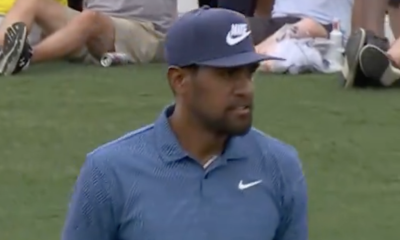
 19th Hole3 weeks ago
19th Hole3 weeks agoThings got heated at the Houston Open between Tony Finau and Alejandro Tosti. Here’s why
-

 19th Hole2 weeks ago
19th Hole2 weeks agoTiger Woods arrives at 2024 Masters equipped with a putter that may surprise you
-

 19th Hole3 weeks ago
19th Hole3 weeks agoReport: Tiger Woods has ‘eliminated sex’ in preparation for the 2024 Masters
-

 19th Hole1 week ago
19th Hole1 week agoTwo star names reportedly blanked Jon Rahm all week at the Masters
-

 19th Hole6 days ago
19th Hole6 days agoReport: LIV Golf identifies latest star name they hope to sign to breakaway tour
-

 19th Hole7 days ago
19th Hole7 days agoNeal Shipley presser ends in awkward fashion after reporter claims Tiger handed him note on 8th fairway
-
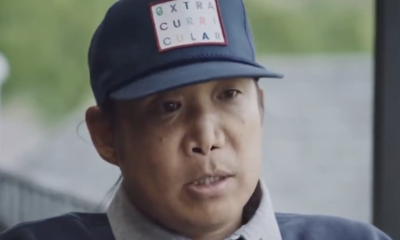
 19th Hole3 weeks ago
19th Hole3 weeks agoAddiction, spinal fusion, and scam artists – Everything Anthony Kim revealed in candid interview with David Feherty

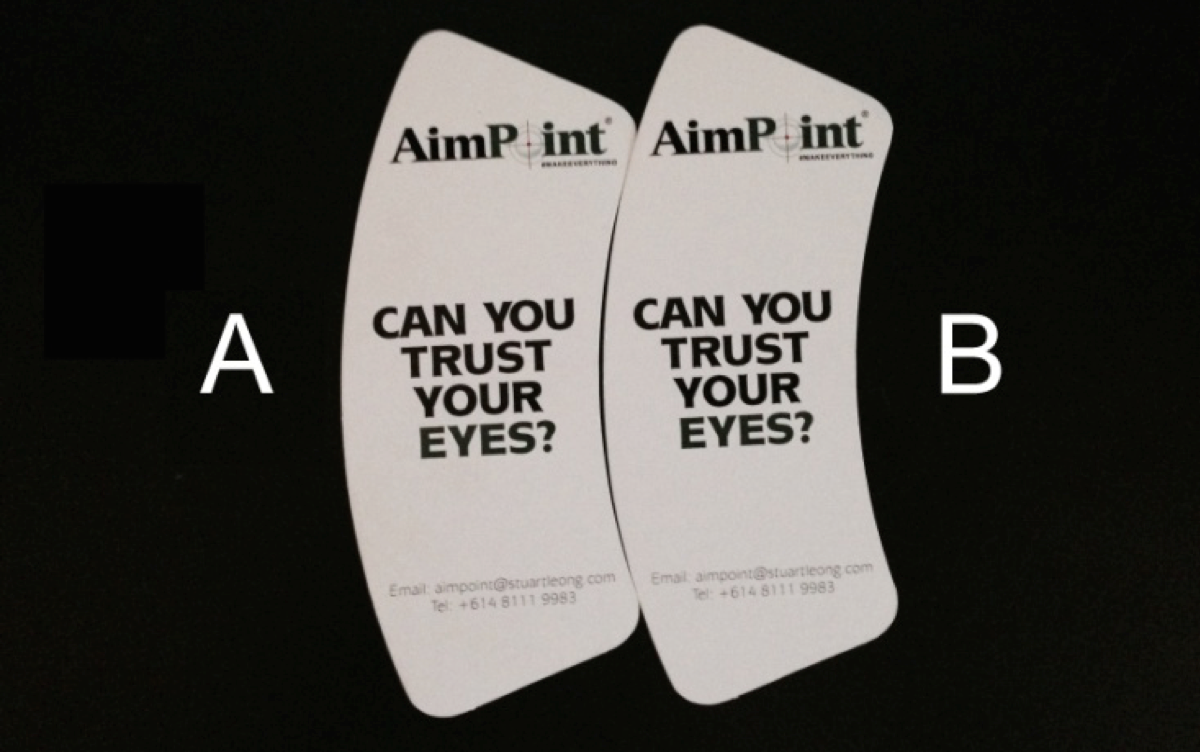







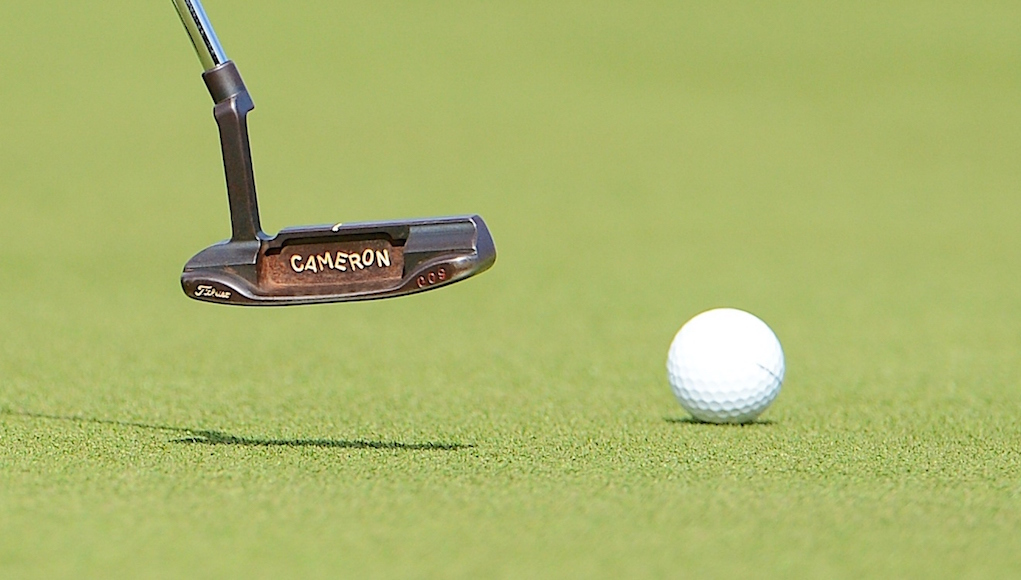
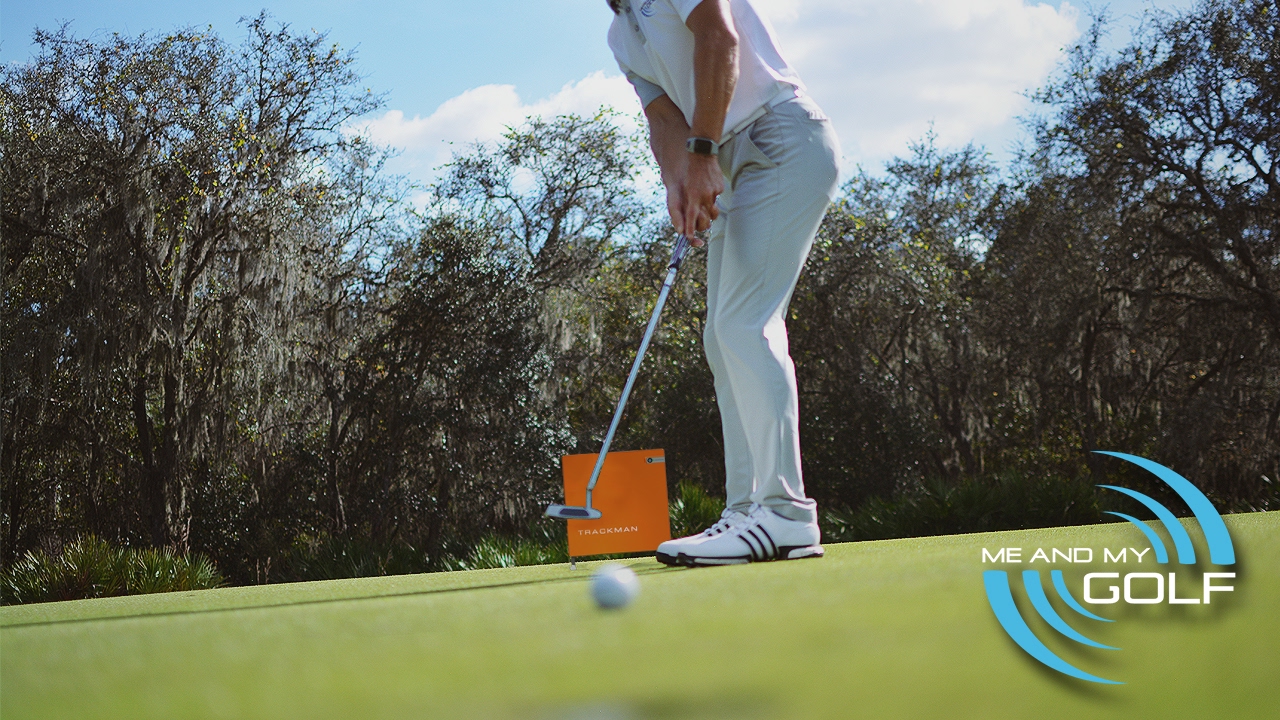
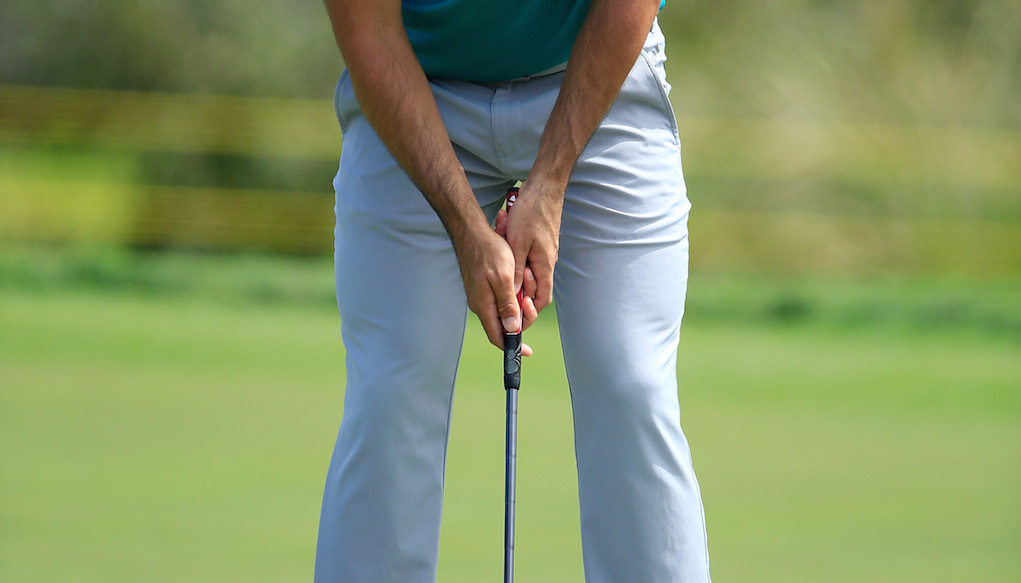
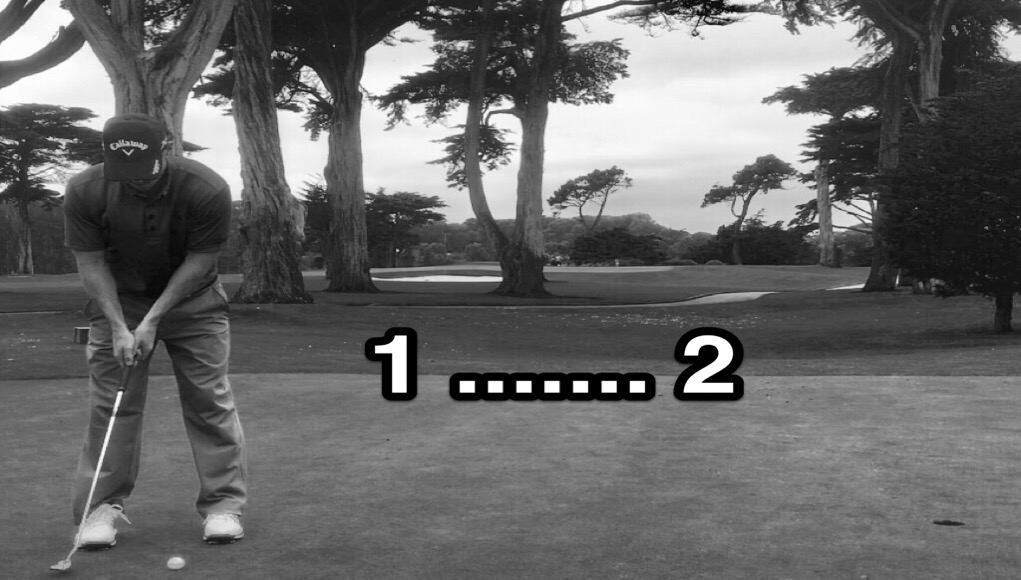







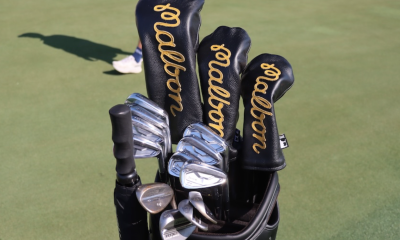



terry
Feb 27, 2015 at 11:28 am
could this be part of what’s wrong with golf. its hard enough, now course architects are changing the slopes to not match the natural tendencies… dumb.
Jerry
Feb 19, 2015 at 12:51 pm
“Feeling” the slope with your feet is only valid for about a 3 ft putt. Beyond that length the slope is rarely consistent with where the ball rests. Matter of fact, for me at least, if I can feel the slope when I stand over the ball for that 3 footer, it’s so severe that it’s real luck if ball goes in.
Jose
Mar 3, 2015 at 2:09 pm
We have found this not too be true. Your feet can tell you a lot about how the green changes over distance.
Shawn Clement and I have crafted a putting drill in the dark. Well almost in the dark. You need enough light such as a full moon or a nearby parking lot lamp so that you can still barely see the hole and ball while being totally deprived of depth perception.
You do the around the world drill at a pin position with slope using 5 balls at 5 feet. For ADHD kids we do semi circles and alternate the sides of the hole in order to maintain focus. Since you can not see the slope your senses will be hyper charged to be aware of what your feet and your inner balance mechanism are telling you. When you go up and over the falling it becomes very obvious. By the third time through the sequence you will make most if not all of the putts even though you can not see a thing.
Then do the same with a 5 ball ladder drill from 10′ to 30′ feet. With the first putt you can stills how the ball reacts near the hole. On the second putt you apply that knowledge plus what your feet are telling you is the difference between ball 1 and ball 2 and the second putt ends up much closer. By the third time through the ladder there is very little difference between the outcome of the ladder drill in the dark vs the ladder drill in the light.
However you still need your eyes. You need both senses to allow you brain to predict. This is why we teach ADHD kids to walk above the break, around the hole and stop below the hole. Then they build a picture of how the ball will roll into the hole. They walk back to the ball below the break. Then they build a picture of the ball going into the hole starting from the hole backwards from what both their feet and their eyes are telling them.
It is like a Chef sautéing vegetables. An experienced chef uses what his or her eyes, ears, and nose are telling them what is going on in the pan. If the veggies have spent a couple of days in the crisper, they are more dehydrated and will sizzle less in the pan. At that point the chef instinctively grabs for the chicken stock sooner. His brain has predicted from the sound and experiences that the veggies are about to burn sooner than the time the recipe suggests.
You need to build awareness of what your eyes, feet and inner balance mechanisms are telling you.
Your brain is a marvelous prediction machine.
pete kauffman
Feb 13, 2015 at 9:24 am
How can an amateur learn AimPoint?
Rob Strano
Feb 13, 2015 at 10:52 am
Go to the Aimpoint website and find an instructor near you and contact them.
Rob Strano
Feb 13, 2015 at 8:04 am
Thanks for all the mostly favorable comments on the article. Understand that I wrote it to help explain why you “might” miss putts, why there is another way, and to correct wrong information that so called expert golf commentators are sharing during telecasts (Yesterday Feherety said everything at Pebble breaks toward the ocean, UGH….). In this limited space I do not have the luxury of a dissertation length narrative to explain everything. Just because I did not write about the HOW does not mean anything negative mentioned in the comments is valid. It means that I chose to help you by giving you facts over falsehoods and misconceptions so that you are correctly informed. If you want more about AE here is a great article about the HOW by one of the other certified instructors:
http://www.todaysgolfer.co.uk/tips-and-tuition/tuition-features/the-art-of-green-reading/
Martin
Feb 13, 2015 at 6:25 am
I just read an article about a process I had never heard of before and I don’t know anything more about it than I did before I read the article.
Long
Feb 13, 2015 at 6:08 am
The idea of Aimpoint express is to quickly read the break and give us the weekend hackers a much better chance to 2putt from outside of 6 feet. I dont expect to make everything for mid range and long range putt. My number of 3 putt has significantly reduced since i took the aimpoint express class. And like some of you mentioned, you have to practice a lot to get better at feeling the slope with your feet. Adam has practiced every day to feel the slope and double check with a digital meter.
Tom
Feb 13, 2015 at 5:28 am
If this article was in any sort of scientific journal it would come with a massive disclaimer at the bottom of it.
Plus the question at the top of the article is ‘Which looks longer, A or B?’ not ‘which is larger, A or B?’ Therefore the answer is ‘B’ it looks larger.
Tim
Feb 13, 2015 at 4:41 am
I have tried it. Not sure I like it. feeling the break through your feet is just as difficult as seeing it with your eyes. Its also just as open to error. if you tend to favour your weight on one side or the other won’t that make a putt that curves feel straight potentially. If I was barefoot on a green I might be able to feel all the slopes, but with spiked shoes its just as much a lottery for me as using my eyes
Fred
Mar 5, 2015 at 3:12 pm
That is exactly correct Tim ! I have got to come up with a gimmick for golf. We are so easy !
Chris C
Feb 13, 2015 at 12:05 am
With all due respect, this article provided no useful information and is simply an add for Aimpoint. I am not saying that Aimpoint is worthless. I am saying that this article provided no information regarding the “secrets” of Aimpoint. Step right up people. Pay your quarter and step into into the tent to see the lizard girl from the Amazon… It’s fast; it’s not rocket science and some very good golfers know the secrets. At least the carnival barkers give some examples of what might be revealed inside the tent. With respect to Aimpoint, I would be satisfied if the author would have given a good explanation as to Scott’s use of a Vulcan mind meld grip to assess green breaks.
Andy W
Feb 12, 2015 at 5:49 pm
So “regular” Aimpoint goes to the curb, now “Express” claims get 95% good reads? Insane quick Expert Greenreading is guaranteed 100% of the time with a P&SI-EGOS; where if ever a bad read, it is pilot error. And free support to correct pilot error. No charts, no foot feeling, no fingers needed.
Anon
Feb 12, 2015 at 2:48 pm
Nice sales pitch. Your article didn’t actually present any information about aim point though. You just bragged about who uses it and name dropped the whole time. Are you afraid if you shared a little knowledge that no one would come to you for lessons? This kind of thinking kept golf instruction (and other industries) in the dark ages for the longest time!
Rob Strano
Feb 12, 2015 at 10:34 am
“When I stand over a six-footer I have a game plan,” says Adam Scott. “I know where the putt needs to go and that gives me great confidence.”
Captain Oblivious
Feb 12, 2015 at 10:15 am
Sounds interesting. I think I will pass, though. I already make an extraordinary amount of putts. If I made any more, I’m sure I would be investigated by numerous government and golfing organizations. Senate hearings, the whole deal. Thanks, but no thanks.
Steve
Feb 12, 2015 at 8:58 am
Adam Scott started using aim point when he was the number 1 player in the world, now he is number 5. Seems to be working, what a joke.
Birdeez
Feb 12, 2015 at 10:10 am
yet his putting stats have gotten better…. sometimes you drop in world ranking for other reasons, but that would take little more common sense and time from your part which you seem incapable of
Steve
Feb 12, 2015 at 1:30 pm
This article is a advertisement at best. it is a complete joke and has no merits, no proof that it works. It is some teaching pro trying to drum up buisness.
rc
Feb 11, 2015 at 10:08 pm
I’m just waiting for the comment here with the youtube link for it :0)
Rob Strano
Feb 11, 2015 at 9:39 pm
Thanks for all the comments on the article pro and con. I just got really frustrated last week at the comments during the telecasts on the LPGA and PGA Tours. Mainly this one from Ocala between between Jerry Foltz and Judy Rankin on The Golf Channel telecast.
Here is the transcript of the conversation:
Foltz: “I know Judy you get a lot of questions from viewers who look for a definition as to what it is, and it’s impossible to give you an overview that quickly but essentially it’s a modern day way to quantify what you feel with your feet a plumb-bob if you will.”
Rankin: “And if you stick with us for a few weeks we are going to make every effort to explain this in layman’s terms.”
Foltz: “You feel the slope with your feet and you learn how to judge it between a scale of 1-5 and then you stand behind the ball hold up those fingers next to the golf ball and where the outside finger is in relation to the hole that is your Aimpoint. It is a little more complicated than that.”
(Then Lydia Ko makes a super long birdie putt using Aimpoint Express!!)
Rankin: “I have to ask one more question Jerry…Does it matter which is your dominant eye because it sure did plumb-bobing?”
Foltz: “Yea, I believe it does. Yea, you just , with plumb-bobbing you are like how Karrie Webb does, and is doing, you have to basically stand perpendicular to the slope and then hold your dominant eye. The putter between your dominant eye and the outside edge of the ball. Very similar with the Aimpoint.”
Very confusing and it made my head spin listening to them and I know what I am doing. So how must the viewer feel when hearing all that?. It is OK if you do not know something to simply say “I don’t know,” instead of making stuff up. The point is to help the readers understand some correct facts against what they are hearing on telecasts and maybe see why the best players are doing it.
Richard Davis
Feb 11, 2015 at 9:34 pm
I’m blind in one eye,a good reader of greens.
I actually do it with my feet. I learned the art
of putting from a pro that played in the 1st
masters. Won’t use his name,son copied righted
everything he did or said.
(QUOTE) in real estate 3 important things to remember
Location…Location…Location
IN PUTTING POSTURE…BALANCE…FEEL
Everything starts from the ground up.
Secret
Feb 11, 2015 at 8:15 pm
Folks folks folks.
The reason why there is so much misinformation from guys like Foltz and even good Tour players is this…..: They don’t really want you to know the secret. It’s always been that way.
8thehardway
Feb 11, 2015 at 7:48 pm
So AimPoint mitigates our difficulty reading curves, it’s accurate and easy to learn…
what differentiates it from a protractor?
and why is Adam Scott holding up two fingers?
An overview would have supported your product better than the unexplained correlation with feet, fingers, photos and four paragraphs on non-natural drainage patterns.
The lack of clarity is doubly annoying because my green reading I’m bad at reading the line
Secret
Feb 11, 2015 at 8:16 pm
If you take the course, you would know, wouldn’t you? Duh
Preston
Feb 11, 2015 at 7:40 pm
I’ll save you folks some money. Here’s how it was explained to me by someone that did go to a teacher on the Aimpoint (not sure if it is correct, but I won’t spend the money on the class to verify it): The number of fingers is the amount of break. The length of your arm (distance from your eye) is the speed of the greens. This is the basic principle. First, you calibrate your arm (distance) to the speed of the green, then decide if the putt is a one finger break, 2 finger break (more break), 3 finger, etc….
Example: a huge swinger from right to left… you determine that this much elbow bend equals the speed of the green, the amount of break is 2 fingers. Hold that up to the hole in front of you. This will give you your aim point for the putt.
Secret
Feb 11, 2015 at 8:20 pm
hahahaha what a joke.
MAx
Feb 12, 2015 at 9:24 am
Thank you for the explanation.
skytrooper70
Feb 19, 2015 at 1:52 pm
The number of fingers is based upon your getting to know the degree of slope (from 1-5, with the number of fingers equaling that degree). However, you place the index finger over one-half of the cup and determine your aim point, using the outer most finger (again, from 1-5). I never took the course but saw a promo video. My first three rounds since using Aim Point had me draining longer (over 10 feet) putts on a more consistent basis or just burning edges, more consistently. This meant the dreaded 3 putts were history. The key is to get used to your feel for slope and knowing how hard to hit your putts. Personally, whether it’s a cure-all or not is irrelevant. Now, I have much more confident in my reads and that’s what counts for any golf shot–confidence.
Rob Strano
Feb 19, 2015 at 5:35 pm
“Now, I have much more confident in my reads and that’s what counts for any golf shot–confidence.” Bingo!!! This is what the tour players tell me. They say now I have a plan and feel more confident over the putt…
Cyd
Feb 11, 2015 at 5:15 pm
Anyone that listens to Jerry Foltz is asking to miss putts, cuts, greens, fairways and the broad side of a barn.
Foltz is wrong so often I don’t think he is even watching the same tournament or much less the same shot or putt that I am.
golferjack
Feb 11, 2015 at 4:57 pm
How about letting us know what Aimpoint is (I do know this is just a comment) and give us a bit of Information about how it works……..Otherwise I would like to see the Stats from the Players who use it now and how they putted before ….Then maybe I would like to invest my hard earned bucks in a lesson. Just as an extra there, I am quite happy with my putting but new things are often worth a look.
Philip
Feb 11, 2015 at 4:50 pm
I’ve learned to just trust myself “my 5 senses, yes all 5”. Works from any distance, slop, or speed of greens and can adjust immediately to changing conditions. I believe many just forgot how to listen to their senses and let that information set them up for the putt. It is almost as if someone else is making the putt for you.
It tool me a few months last season, but it was a project that is seeing results in all aspects of my game besides putting. Putting just seemed logical to approach first.
Andrew Cooper
Feb 11, 2015 at 4:26 pm
Trust your feet don’t trust your eyes? Ok try reading a green with your eyes closed and relying on your feet to feel the slope…
Rob Strano
Feb 11, 2015 at 10:01 pm
Thanks for your comment Andrew. If you love the game like I do then you have run into this situation. It is late in the day and you say to yourself, “I can squeeze in a quick 9 before dark!” But you don’t quit make it and with 3 holes to play it is hard to see the ball in the air let alone read a green. Over the summer this happened to me and using AE I made 3 in row coming in without being able to see a thing. Years ago on tour (back when it was Buy.com before Nationwide) I was finishing in the near dark, they had not called play because we were two holes from done, and it was darn tough to see. Wish I had this back then!
Andrew Cooper
Feb 12, 2015 at 3:58 am
Rob, thanks for taking the time to reply. I’m a little skeptical of AE, but obviously lots of good players, yourself included, are devotees so I don’t want to knock it. Just can’t think I’d ever trust my feet to feel a slope over what my eyes are telling me! I can relate to your experiences of playing late in the day and holing putts-maybe because we’re also not over thinking the putt too? more relaxed, lower expectations? I’ve always felt I can read greens well- I’ll hit my share of bad putts but rarely do I get fooled by a break-maybe I’ve a sense of slope coming through my feet without realizing it.
Connor
Feb 11, 2015 at 3:23 pm
I live in Seattle, WA and the nearest AimPoint certified coach wanted $600 for a 2-hour lesson.
…I’d rather 3-putt?
Rob Strano
Feb 11, 2015 at 10:47 pm
Connor thanks for your comment.
I charge my normal one hour lesson fee. Interested to know who that is and I cannot imagine they are doing many sessions at that rate.
Mike
Feb 11, 2015 at 3:12 pm
Sebastian, here are 3 Aimpoint certified instructors in Canada: Paul Horton Heritage Point Golf Club DeWinton Canada, Derek Ingram Elmhurst Golf and Country Club Winnipeg Canada, Martin Whelan Club de Golf St-Rapha L’lle-Bizard Canada.
Sebastien
Feb 11, 2015 at 2:48 pm
I wish I could learn it but are any course offered in Canada?
jeff
Feb 11, 2015 at 10:45 pm
Liam Mucklow at the Golf Lab in Toronto
snowman0157
Feb 11, 2015 at 12:04 pm
I have taken the level 1 Aimpoint class (not Express)….but actually I have started using my feet to feel the slope and then trying to just trust it with my stroke….It Works! The feet and brain are very well calibrated it seems. If this is similar to the AP Express method, then I would suggest folks try it.
Rob Strano
Feb 11, 2015 at 10:05 pm
Snowman thanks for your comment. The article is about Aimpoint Express and glad you understanding the correlation between feet and slope. In a couple of years only the stubborn will rely 100% on the old way to read a green.
Don B
Feb 11, 2015 at 11:11 am
Great article, as an Aimpointer myself I get asked all the time what it is and how it works and I am happy to offer a quick lesson or a full scale demo. Doing this doesn’t really make someone good at it, until you spend some time training your feel for slope!
So that’s where taking a class or two comes in. I have done training with Mark Sweeney and even he will tell you that without practice you will not be as accurate.
One other point that will no doubt open Pandora’s box, is Grain! Just like Rob mentions that slope doesn’t necessarily break to a body of water or like the TV folks repeatedly say about the setting sun, grain is a misunderstood property of green reading. To put it bluntly, it has little bearing on green reading because “grain is slope”. Grain is the direction in which grass grows and grass grows where water goes. Water goes with the slope!! On today’s greens that are cut much shorter than in the past, grain is negligible.
The only place grain effects a read is where the grass is longer, say fringe! And the only place grain doesn’t grow with slope is where there is no slope, on really flat spots.
Aimpoint won’t guarentee you make every putt, but it will sure help you understand how to make more and why you miss when you do. I was always a poor putter but I now feel like I can make everything. And if I dont, it’s usually not far off.
Rob Strano
Feb 11, 2015 at 10:22 pm
Thanks for your comment Don and your last sentence is dead on…
When I miss it always looks like it is going to go in but at the last roll just misses.
Really tightens down your reads.
Keep it up and make everything in 2015
frendy
Feb 11, 2015 at 11:00 am
This article should be filed under ADVERTISEMENT.
Zak Kozuchowski
Feb 11, 2015 at 11:04 am
It’s filed under opinion, and comes from one of our regular featured instructors who writes about a variety of topics.
Knobbywood
Feb 11, 2015 at 2:13 pm
This article does not tell you anything about how to use the system but it certainly tries to put the hook in our mouths so we can all go and pay for aimpoint lessons… I agree this is basically an advertisement and I don’t think it should be on golfwrx
Preston
Feb 11, 2015 at 7:32 pm
I agree, this it definitely not an opinion piece. An opinion piece would offer an opposing viewpoint, usually backed up with some facts. This is a teaser for trying to drum up business for Aimpoint teachers, which the writer just so happens to teach.
Travis
Feb 17, 2015 at 4:00 pm
I’m not sure you fully comprehend what “opinion” means.
Keith
Feb 11, 2015 at 9:18 pm
100% agree…but…AimPoint Express is legit and worth it if you can find a pro that doesn’t price gouge for a lesson.
4pillars
Feb 11, 2015 at 10:10 am
The big issue with aimpoint express is that it is so simple you don’t want to tell people how it works because you will lose big $$$$ on your expensive 2 hour classes.
The actual information on aimpoint express you could write in a ten page ebook.
Your article dosn’t in fact explain how aimpoint express works.
I’m not knocking aimpoint express as a technique – I use it myself – just the $$$$ mentality around it.
Knobbywood
Feb 11, 2015 at 2:23 pm
Bullseye! First article on this site to actually make me feel disgust… Sad as this is one of my favorite sites 🙁 and this guy one of the best writers too…
Rob Strano
Feb 11, 2015 at 10:41 pm
Knobbywood thanks for your comment and sorry you feel so strongly that way. If you read my lengthy comment above you see that my desire to write this comes from all the incorrect commentary on the telecasts. Why does everyone have a hard time saying, “I simply do not know enough to have an informed opinion?” Also, I am unaware of the big $$$ around AE. I charge the same rate as my hourly lesson fee.
Thank you for also saying I am one of the better writers. That was very kind of you. Don’t personally feel that way and am just trying to help everyone enjoy the game more and play better by sharing information from lessons at my academy.
BTW, your handle would make a great golf course name:
Knobbywood Golf Club – Pine Forest, Illinois
Dennis Corley
Feb 11, 2015 at 2:26 pm
In my opinion:
Pricing of a product or service should be about “value” not “volume”. Just because the inventor can explain the innovative process in a short and simple fashion should not make it “less valuable” or “less expensive”. In fact I think it is more valuable how the process has so simplified some complex science.
Value is set by the consumer. If the seller can help you putt significantly better with a small amount of information – how much is it worth to you? Many golfers are paying $250-$500 to get 10 more yards on a drive. I would argue that the benefits to score are more significant with AimPoint Express than a new driver.
I will also say that, like stealing someone’s music with something like Napster, stealing the Aimpoint Express methods is not “OK” just because it is easy to communicate. (I am not suggesting that you specifically are going to steal it.)
I have taken two AimPoint Express clinics. It is fast, effective, and worth the price– to me. If it is not to you, that is fine, just don’t then feel OK to steal the information.
Jesse
Feb 11, 2015 at 10:01 am
Great article there is so much disinformation about Aimpoint im glad you cleaned it all up. I’ll be taking an Aimpoint clinic this year and am excited to try it out as putting has always been the worst part of my game.
Rob Strano
Feb 11, 2015 at 10:43 pm
Thanks for the comment Jesse. It will help you tighten up your reads a lot. One of the main questions I get from players who tell me putting is the worst part of their game is how do I read a green. This will help you a bunch.
Play well in 2015 and make lot of putts!